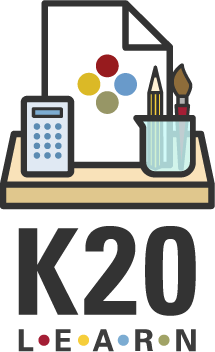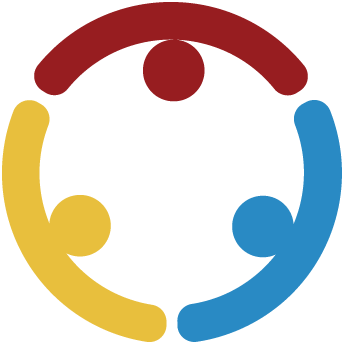Summary
In this session, participants will examine their understanding of family engagement and reflect on past Family Leadership Academy (FLA) efforts to identify areas of strength and improvement. They will explore the impact of increased family participation on student success and school culture, and they will create tailored recruitment plans to support this goal. The session concludes with group reflection and sharing key takeaways to reinforce learning and collaboration.
Essential Questions
How can we strengthen and expand our Family Leadership Academy teams to empower more families and create lasting impact in our schools?
Snapshot
Engage
Participants activate their knowledge about family engagement by identifying which statements about engagement are true.
Explore
Participants reflect on their past Family Leadership Academy (FLA) efforts, identifying strengths and areas for improvement.
Explain
Participants learn the importance of increasing family participation in FLA, highlighting the long-term benefits for student success and school culture.
Extend
Participants develop and implement customized recruitment plans that reflect the unique needs of their school communities.
Evaluate
Participants reflect on what they have learned in the session with their groups and pick one takeaway to share with the whole group.
Materials List
Presentation Slides (attached)
Family Leadership and Engagement Research Brief (attached; one per participant)
Two Stars and a Wish Organizer (attached; one per participant)
Top 10 Family Recruitment Practices (attached; one per participant)
Family Leadership Recruitment Plan (attached; one per school group)
4-2-1 Organizer (attached; one per participant)
Half sheets of colored paper (one per participant)
Learning Goals
Reflect on the successes and challenges of Family Leadership Academy (FLA) participation.
Collaborate to develop targeted recruitment plans.
Foster peer-to-peer learning between schools with varying levels of FLA participation.
Engage
5 Minute(s)
Use the attached Presentation Slides to introduce the session to participants, beginning with slide 2. Move through slides 3–4 and go over the essential question and learning objectives. Display slide 5 and introduce the strategy Always, Sometimes, or Never True. Go through the statements on slides 6–25 and have participants engage with the statements with a thumb up, sideways, or down to indicate whether they think each statement is always, sometimes, or never true.
Explore
20 Minute(s)
Display slide 26 and discuss the quote on the slide about the significance of partnering with families. Pass out a half sheet of colored paper to each participant. Transition to slide 27 and give participants time to reflect on FLA services. Ask participants to answer the questions on the slide on their paper. Move to slide 28 and introduce participants to the Commit and Toss strategy. Participants should crumple their response papers and toss them across the room. Ask participants to then pick up a crumpled paper near them and share the response inside with their group.
Explain
10 Minute(s)
Pass out a copy of the attached Family Leadership and Engagement Research Brief and Two Stars and A Wish Organizer to each participant. Display slide 29. Introduce participants to the Two Stars and a Wish strategy. Invite participants to read the brief and write down in the organizer two things they feel they do well in their school (stars) and one thing they could improve (wish). Move to slide 30 and discuss the quote on the slide.
Pass out a copy of the attached Top 10 Family Recruitment Practices to each participant. Move to slide 31. Have participants read through all ten practices and circle one strategy that they would like to implement this year.
Extend
20 Minute(s)
Pass out a copy of the attached Family Leadership Recruitment Plan to each school group. Transition to slide 32 and introduce participants to the Fold the Line strategy. Have participants partner up and begin developing recruitment plans. First, participants should determine their level of family engagement toward their school group. Then they should send a representative to line up accordingly.
Next, fold the line in accordance with the strategy. Participants should follow the fold to meet another participant halfway. Their partner school should now be standing in front of them. Display slide 33. They should sit with their school and their partner school and work together to develop their recruitment plans. Invite participants to share their ideas for the upcoming school year’s recruitment.
Evaluate
5 Minute(s)
Move to slide 34. Pass out a copy of the attached 4-2-1 Organizer and introduce participants to the 4-2-1 strategy. Ask participants to write down four takeaways from this session in the top boxes. Have participants partner with someone and share what they wrote. Together they should narrow their takeaways down to two and write those in the next two boxes. Next, the partners will find another pair and share again. The two pairs will narrow down the takeaways to one final selection. Invite groups to share what they decided to have as their main takeaway.
Move to slide 35 and discuss with participants their next steps for implementing their recruitment plans.
Research Rationale
Partnerships between school, parents, and community positively impact student achievement when intentionally created and developed to build relationships and communication (Akbar et al., 2017; Epstein, 2010; Epstein, 2016; Epstein & Sheldon, 2016; Hattie, 2009; Mac Iver et al., 2015). Partnerships, such as a Parent Leadership Team, should be an essential, embedded structure within the school community and culture (Epstein & Sheldon, 2016). These parent teams must receive strong support from district leaders, school leaders, and teachers. Without commitment from these parties, the partnership will suffer. Research shows that partnerships with effective support from leaders report more success among students when transitioning between schools (Epstein, 2010; Epstein & Sheldon, 2016; Mac Iver et al., 2015). Parents should be seen as a key component of the culture and community within the school. They should not be viewed as a group of "them" who is separate. To accomplish this, schools must invite parents and make the feel welcomed, providing clear opportunities for them to actively engage in the decision-making process (Hattie, 2009; Mac Iver et al., 2015). Parents and community members should be considered a rich resource because they share the same long-term goals of student success beyond school (Epstein, 2010).
Epstein (2016) explains that schools must use research-based tools and training to identify the “how-to” of developing and implementing a sustainable partnership of school, family, and community. The Parent Leadership Academy is designed as such, using researched-based strategies to create and implement a lasting structure that allows parents to recognize shared interest in all students' education and achievement. It provides an opportunity to share responsibility and involvement to support needs of the school and effectively serve students. Research shows that when diverse and active parent involvement is frequent and reliable within the school community, overall student achievement is positively and significantly affected (Epstein, 2010; Epstein & Sheldon, 2016; Hattie, 2009) because it increases the communication of a common message and goal (Epstein, 2010). Since district, school, and student needs differ from state to state, city to city, and site to site, partnership programs must be designed differently using research-based strategies to accommodate specific needs shown by site-specific data. Schools must design and continually reflect on used practices and data while considering the needs, interests, time, talents, ages, grade levels, and so on, of the students and their families (Epstein, 2010; Epstein & Sheldon, 2016). Partnership programs, like Parent Leadership Academy, establish a foundation of respect and trust. They open the lines of communication, creating easier avenues to identify and solve problems as they arise (Epstein, 2010).
Resources
Akbar, T., Asrar, M., Younes, M., & Chishti, A. F. (2017). Parental involvement and students’ academic achievements: A quantitative study. retrieved from https://papers.ssrn.com/soL3/papers.cfm?abstract_id=2926940
Epstein, J. L. (2010). School/family/community partnerships: Caring for the children we share. Phi Delta Kappan, 92(3), 81-96. Retrieved from http://journals.sagepub.com/doi/abs/10.1177/003172171009200326
Epstein, J. L. (2016). Searching for equity in education. In A. R. Sadovnik & R. W. Coughlan (Eds.), Leaders in the Sociology of Education: Intellectual Self-Portraits (pp. 69-85). Boston, MA: SensePublishers.
Epstein, J. L., & Sheldon, S. B. (2016). Necessary but not sufficient: The role of policy for advancing programs of school, family, and community partnerships. The Russell Sage Foundation Journal of the Social Sciences, 2(5), 202–219. Retrieved from http://www.rsfjournal.org/doi/full/10.7758/RSF.2016.2.5.10
Hattie, J. (2009). Visible learning a synthesis of over 800 meta-analyses relating to achievement. New York: Routledge.
K20 Center. (n.d.). 4-2-1. Strategies. https://learn.k20center.ou.edu/strategy/142
K20 Center. (n.d.). Always, sometimes, or never true. Strategies. https://learn.k20center.ou.edu/strategy/145
K20 Center. (n.d.). Commit and toss. Strategies. https://learn.k20center.ou.edu/strategy/119
K20 Center. (n.d.). Fold the line. Strategies. https://learn.k20center.ou.edu/strategy/171
K20 Center. (n.d.). Two stars and a wish. Strategies. https://learn.k20center.ou.edu/strategy/83
Mac Iver, M. A., Epstein, J. L., Sheldon, S. B., & Fonseca, E. (2015). Engaging families to support students' transition to high school: Evidence from the field. The High School Journal, 99(1), 27-45.


